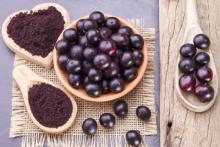Superfood 101: Wheat!
Wheat is a member of the family Poaceae ⁄ Gramineae or Grass family of the genus Triticum L. or wheat containing the species Triticum aestivum L. or common wheat. The plant is native to southwestern Asia and has been eaten for approximately 12,000 years. Wheat arrived in the western hemisphere in the late 15th century with Christopher Columbus and the pilgrims but it was not until the 19th century that the plant was cultivated.










